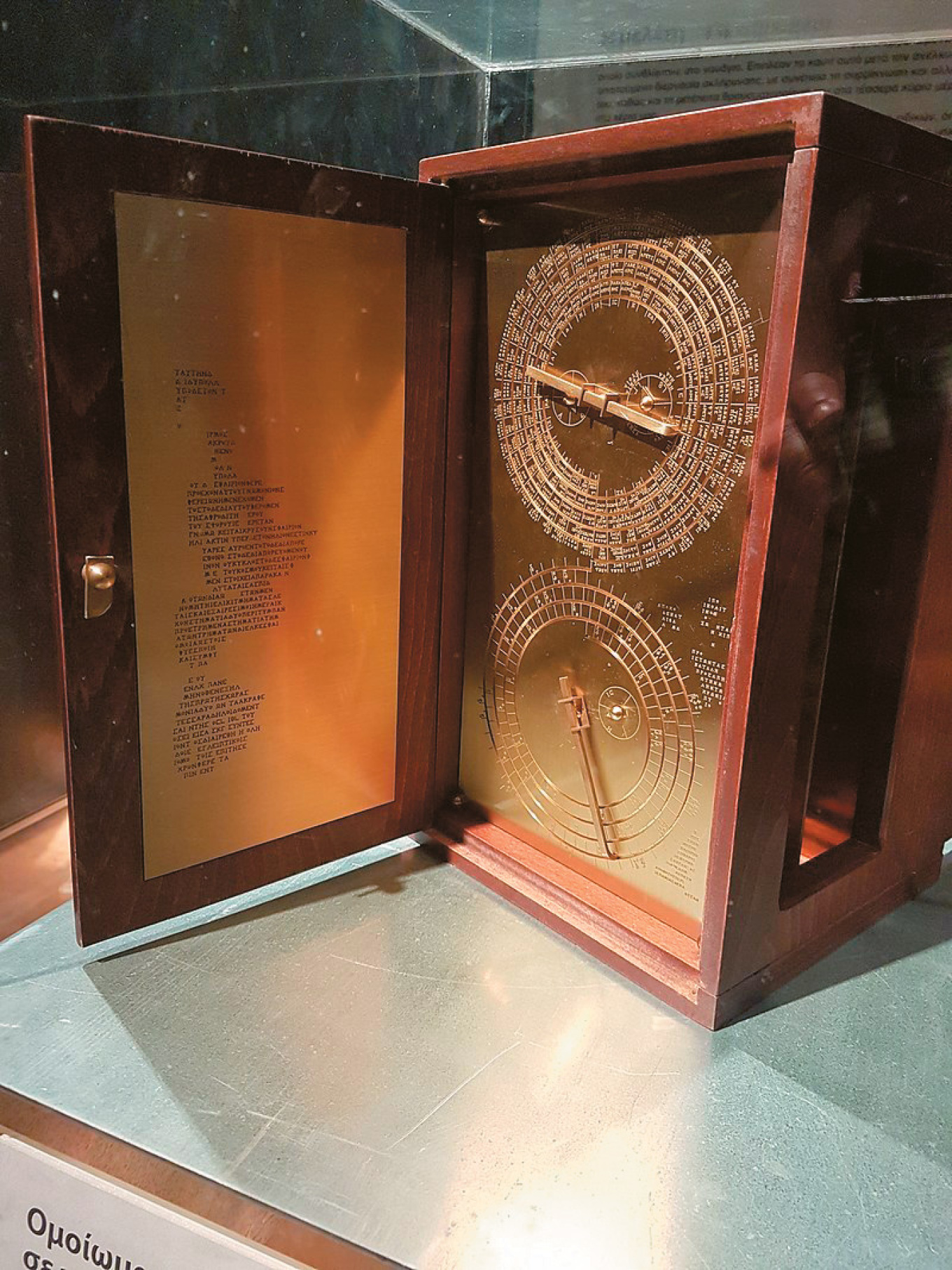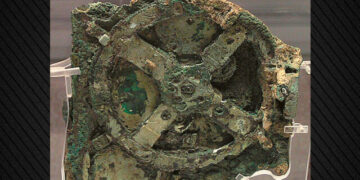The enigmatic Antikythera Mechanism is back in the limelight. According to a Live Science article, it’s been suggested that this ancient artifact isn’t a scientific instrument but a sophisticated game. Researchers from the National University of Mar del Plata developed a computer simulation of the mechanism and, by analyzing the triangular teeth of its gears, found that construction faults could lead to jamming. This led them to conclude that the device wasn’t designed for scientific purposes.
Consequently, the research team argues that the Antikythera Mechanism likely functioned purely as a game—an extraordinarily intricate one for its era—rather than as a device for astronomical calculations.
The study by the Argentinian scientists quickly garnered significant media attention after being featured by major global outlets. Nevertheless, many scholars who have extensively analyzed the mechanism assert that its complexity contradicts the notion of it being just a toy.
The Legendary Shipwreck
The Antikythera Mechanism isn’t the only legendary aspect of this story—the shipwreck that revealed it also uncovered numerous treasures and continues to pique scientific interest. Discovered by chance in October 1900 by sponge divers from Symi using rudimentary diving gear, the wreck yielded treasures that now adorn the National Archaeological Museum’s prime exhibits.
Recently, many of these artifacts were displayed in a special exhibit titled “The Antikythera Shipwreck: 124 Years of Underwater Archaeological Research” at the Historical Library of the Aikaterini Laskaridis Foundation, which has long supported scholarly research on the wreck. Jacques-Yves Cousteau revisited the site in 1976, 75 years after its initial discovery, uncovering additional artifacts including coins.
In a region known for its treacherous weather—Cape Maleas famously challenged Odysseus—underwater archaeologist Brendan Foley conducted preliminary investigations using rebreathers to extend dive times at depths of 70 meters. These missions, conducted with Greek state approval and collaboration from the Hellenic Ephorate of Underwater Antiquities, aimed at a more thorough exploration.
Predicting Celestial and Sporting Events!
The latest phase of this research project, called “Return to Antikythera”, is underway, involving a large team of diving archaeologists, seabed technicians, and specialists from various fields including geology, chemistry, and physics. Supported by the Aikaterini Laskaridis Foundation, Nereus Research Foundation, Swiss watchmaker Hublot, and Cosmote, the primary objective is not just to recover artifacts but also to leverage technology to address long-standing mysteries, including the exact location of the wreck and the circumstances surrounding its sinking—details that remain elusive.
Despite numerous scientific efforts to solve the mysteries surrounding the mechanism—one that even inspired an Indiana Jones film—no definitive answers have emerged. The artifact was discovered in a corroded and fragmented state, leaving many crucial pieces to our understanding missing. While some suggest it operated as an early computer that helped ancient Greeks predict celestial movements and eclipses, others, like the Argentinian team, view it as a complex game.
This intricate device, housed in a wooden box roughly the size of a modern laptop, proves difficult to decode even with today’s technology. It was capable of forecasting weather, predicting eclipses, and identifying dates for significant athletic events like the Olympic Games. Some speculate that Archimedes may have been behind its design, while others believe it could have been created by other brilliant minds of that time—its sophistication still recognized as groundbreaking today.

The project “Return to Antikythera” involves a diverse team of specialists, and recent studies, bolstered by technological advancements, have revealed insights into the high level of technology that the mechanism represents—one that, even after 22 centuries, seems far too advanced to be relegated to something as simple as a game, as the Mar del Plata team suggests. Alexander Jones, in his book “A Portable Cosmos – Revealing the Antikythera Mechanism, a Scientific Wonder of the Ancient World”, chronicles the fascinating story behind this extraordinary artifact, rich in mysteries waiting to be uncovered.
Initially considered insignificant when first found in the early 20th century, the “inscribed plaque”—as it was then called—now garners comparisons to toys, computers, and even devices capable of communicating with advanced extraterrestrial civilizations. Little did anyone expect this remarkable remnant of the advanced Hellenistic world, which has captivated leading scientists and philosophers, would continue to intrigue the global scientific community today.
What the Argentinian Scientists Miss
The narrative took an intriguing turn when it became apparent that the fragments could not be interpreted as a singular mechanism. It took the involvement of Spyridon Stais, the Minister of Education at the time, who, noticing gear-like structures on one plate, recognized it as part of a unified device. However, the complexity of the artifact hindered clear conclusions, shifting focus towards its preservation instead.
The central issue persists: the absence of comprehensive data means that even simulations struggle to reach definitive conclusions.
A more effective approach might be a thorough multidisciplinary study, similar to the work of the Antikythera Research Team from University College London (UCL). This team, which included members Myrto Georgakopoulou and Aris Dakanalis, hosted a significant conference in late 2006, leading to important publications a year later.
Their findings were taken seriously by the scientific community and accurately articulated the planetary motions observable in antiquity that the mechanism could track. These breakthroughs prompted researcher Michael Wright, who had previously constructed a model of the mechanism, to revise his design.
On the other hand, the Antikythera Mechanism Research Project, led by British mathematician Tony Freeth, proposed his reconstruction based on his extensive study of the device. Upon viewing Wright’s updated replica, Freeth reportedly expressed great enthusiasm.
The Backside
To ensure findings met modern standards, scientists analyzed various ancient astronomers’ theories, leading to astonishing conclusions that impress even contemporary scientific criteria. According to a recent announcement, nearly all the inscriptions on the mechanism’s rear side have now been decoded, showcasing the advanced technology of the Ancient Greeks—superior to what followed in later millennia.
The challenge lies in synthesizing these findings and making comparisons to uncover all the secrets of this profoundly advanced mechanism, a testament to the scientific progress achieved by the ancients during the Hellenistic era.
Until then, we may need another theory—or perhaps an Indiana Jones—to uncover the full magnitude of its mystery.
What the Argentinian Research Team Claims
The team conducted a computer simulation of the mechanism and, after analyzing the triangular teeth of its gears, concluded that construction flaws might have caused jamming, rendering the device unsuitable for scientific application. They argue instead that it served as an intricate game—one that provided entertainment rather than functioning as an ancient planetarium-computer.

Replica of the Antikythera Mechanism
The Prevailing Theory
Many researchers propose that the mechanism acted as an early form of computer, assisting the Greeks in predicting planetary motions, including the movements of the Sun, Moon, and celestial bodies, as well as eclipses, and determining dates for events such as the Olympic Games.

Another replica of the mechanism
The Antikythera Research Team
Members of the interdisciplinary UCL Antikythera Research Team describe the mechanism as a remarkable testament to ancient Greek ingenuity. The team explains how the gears function within the device. According to Professor Tony Freeth, head of the Department of Mechanical Engineering:
“The Sun, the Moon, and the planets are presented in a way that is a remarkable achievement of ancient Greek brilliance.”


















